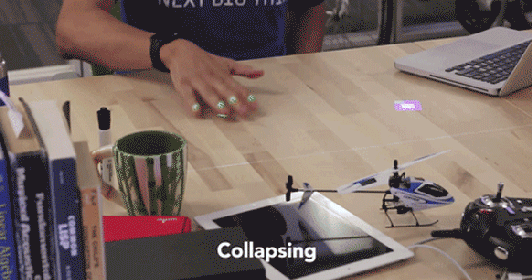5 reasons iPhone 8 will be an augmented reality game changer — from techradar.com by Mark Knapp
Augmented Reality (AR) will be everywhere!
Excerpt (emphasis DSC):
Most of us are at least vaguely familiar with augmented reality thanks to Pokemon Go sticking Charmanders in our sock drawers and Snapchat letting us spew stars and rainbows from our mouths, but Apple’s iPhone 8 is going to push AR to point of ubiquity. When the iPhone 8 launches, we’ll all be seeing the world differently.
iPhones are everywhere, so AR will be everywhere!
The iPhone 8 will bring with it iOS 11, and with iOS 11 will come Apple’s AR. Since the iPhone 8 is all but guaranteed to be a best-seller and earlier iPhones and iPads will be widely updated to iOS 11, Apple will have a massive AR platform. Craig Federighi, Apple’s Senior Vice President of Software Engineering, believes it will be “the largest AR platform in the world,” which will lure AR developers en masse.
Apple AR has huge potential in education.
Apple has been positioning itself in the education world for years, with programs like iTunes U and iBook, as well as efforts to get iPads into classrooms. AR already has major prospects in education, with the ability to make Museum exhibits interactive and to put a visually explorable world in front of users.
Apple could guide you around your city using augmented reality — from techcrunch.com by Romain Dillet, with thanks to Woontack Woo for this resource

Startup Simulanis uses augmented and virtual reality to skill professionals — from economictimes.indiatimes.com by Vinay Dwivedi
Excerpt:
[India] The widening gap between the skills required by businesses and the know-how of a large number of engineering students got Raman Talwar started on his entrepreneurial journey.
…
Delhi-based Simulanis harnesses AR and VR technology to help companies across industries— pharmaceuticals, auto, FMCG and manufacturing—train their staff. It continues to work in the engineering education sector and has developed applications that assist students visualise challenging subjects and concepts.
Our products help students and trainees learn difficult concepts easily and interactively through immersive AR-VR and 3-D gamification methods,” says Talwar. Simulanis’ offerings include an AR learning platform, Saral, and a gamified learning platform, Protocol.
Also see:
























/https://public-media.smithsonianmag.com/filer/25/a4/25a4d074-7a9b-42c8-ac35-2bbf5d59e70d/story_of_the_forest_app_2__image_courtesy_of_teamlab.jpg)


